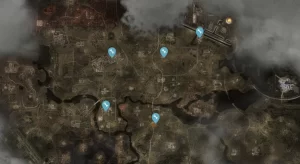Niantic: Pokémon Go healthy and growing as it approaches its next decade
As Pokémon Go approaches its 10th anniversary, the question arises: how much does Ed Wu, senior vice president of the game, still engage with it? During a recent walk in a serene London park, he chuckled while revealing, “I spend as much of my time beating up the game as possible.” Wu often tests work-in-progress beta builds to pinpoint bugs, but he also enjoys playing on his “official” main account, which holds the distinction of being among the first ever registered during the game’s launch in 2016.
“It’s bananas to think this thing is going into its next decade soon,” Wu reflects, noting that he will celebrate a decade at Niantic sooner. He began coding the foundational aspects of Pokémon Go from an office in Washington, which helped the company remain viable. It’s safe to say that Pokémon Go has fulfilled that purpose.
Wu describes Pokémon Go as “not only healthy, but it’s growing.” He emphasizes Niantic’s commitment to investing in the game to ensure it has solid foundations for the next decade. The recent substantial update has introduced a visual refresh to the overworld and encounter screens to better reflect real-world locations and times. Whether players are in the countryside or the city, Pokémon will now appear in environments that correspond to their surroundings. Wu pointed out the reflections of the park’s lake on their phones as they caught Pokémon.
Anticipating the 10th Anniversary
As the 10th anniversary approaches, Wu mentioned that they are refreshing the avatar system to provide a more modern experience with increased customization options. There has been excitement in the community about these upcoming changes, including the possibility of featuring beards for avatars. Discussions also revolve around Niantic’s recent suggestions for diversifying Pokémon spawns, an initiative that draws inspiration from the game’s early days when only the original 151 Pokémon were available globally.
Wu recalled the effort put into ensuring Pokémon appeared in locations where players would naturally expect them, sharing a moment of triumph when a Psyduck appeared near a body of water. “I knew that after all that hard work it was right,” he stated, adding that the team is now focused on reintroducing biome variety as Pokémon Go has grown beyond the original species.
Successes and Challenges
Niantic has navigated a challenging period, marked by project cancellations and layoffs, but it is emerging with a more focused approach. Wu highlighted February’s Sinnoh Tour event as a significant success, stating, “Go Tour was by many metrics our most successful week ever.” This success surpasses even the annual summer Go Fest events, indicating that the game is indeed thriving.
He pointed out the launch of a web store that has resonated well with users, allowing Niantic to offer more value without incurring high fees from Apple or Google. Wu refuted claims of declining revenue, asserting the game’s growth and emphasizing the importance of their non-mobile numbers.
While remote raiding saw a slight decline, in-person raiding surged, especially during the recent Go Tour, as players engaged with their communities. “Ultimately, experiencing the game together keeps it healthy,” Wu explained, revealing that approximately 100 million people played Pokémon Go last year.
Technical Improvements
Despite the successes, challenges remain. Wu acknowledged that there is still work to be done regarding technical issues, referencing a recent event involving the Legendary Pokémon Kyogre that temporarily disrupted gameplay. “We can always do better,” he admitted, noting the complexity of the game’s configuration system, which has evolved over the years.
Improvements have been made in scaling the game’s infrastructure, especially in the Asia-Pacific region, where past issues have been significantly reduced. Wu explained the unique challenge of maintaining a single worldwide instance serving millions of players simultaneously, a feat that sets Pokémon Go apart from other MMOs.
Building the Future of Computing
Wu emphasized the need for scalable systems that provide a consistent experience, whether in rural areas or bustling cities. The algorithms developed to manage player interactions are a crucial investment for the future. “What we’re doing here is not only working on a better, more stable experience for our Trainers, we’re building the future of what computing will look like,” he stated.
As the conversation shifted towards community engagement, Wu addressed the growing presence of in-game event tickets, which have become a common feature. He noted that while there are times when multiple tickets are available, the goal is to optimize this aspect to avoid overwhelming players while still offering meaningful content.
Future Aspirations
Looking ahead, Wu expressed excitement about the potential for deeper storytelling in Pokémon Go, though he emphasized the importance of balance. Players should not feel overwhelmed by excessive text; instead, the narrative should enhance the sense of wonder and adventure.
With the recent introduction of Adventure Effects during the Sinnoh Tour, Wu revealed that while there are many ideas in the pipeline, the team is focused on ensuring new features align with Pokémon Go’s core mission of encouraging exploration in the real world. He hinted at the aspiration to include every Pokémon in the game, emphasizing the importance of introducing them in a manner that suits the game’s adventurous spirit.
As they concluded their walk, Wu remained optimistic about the future, confirming that Niantic is committed to delivering significant new features and transformative experiences for players. “We will continue to deliver huge, major features, and we have several lined up for later this year,” he affirmed, underscoring that collection and exploration will remain central to Pokémon Go’s evolution.




























Post Comment